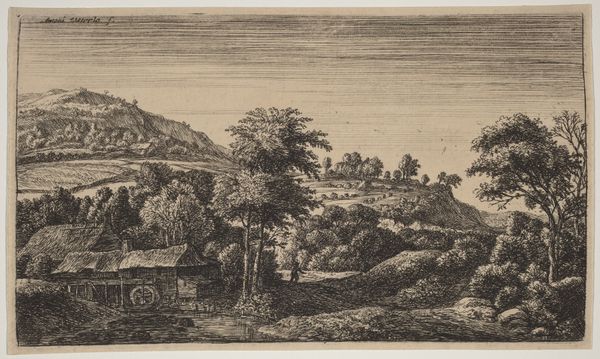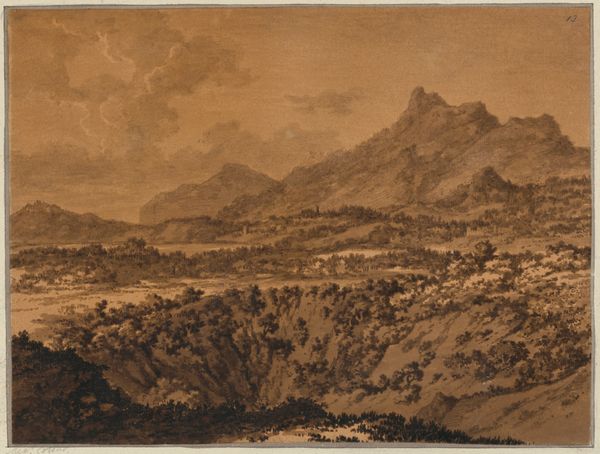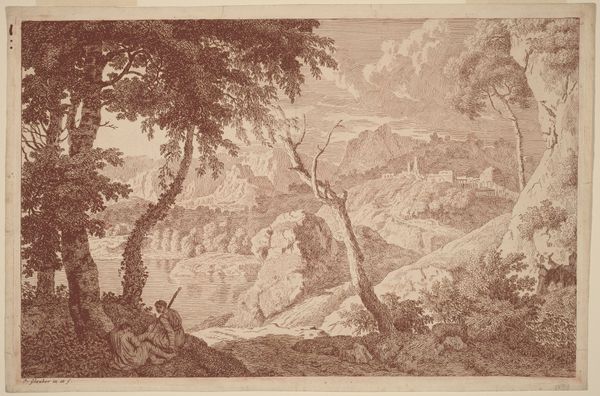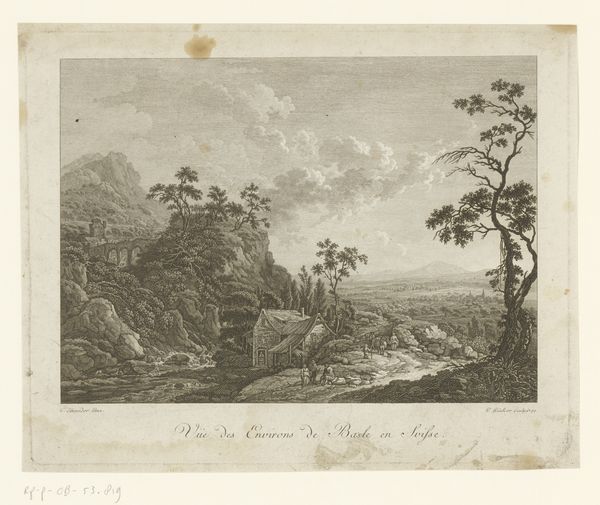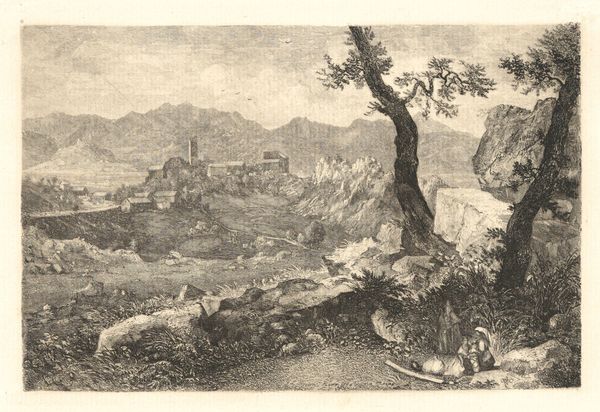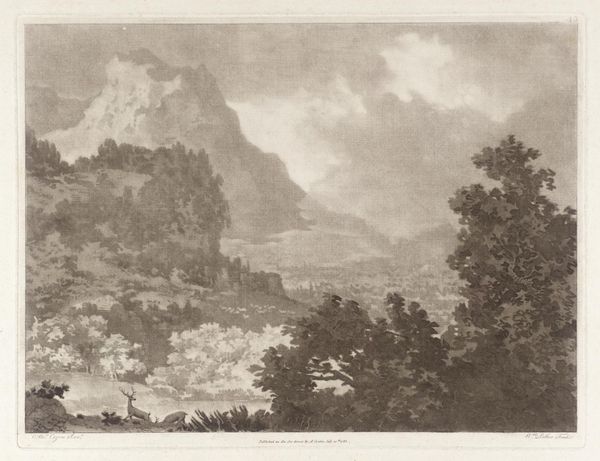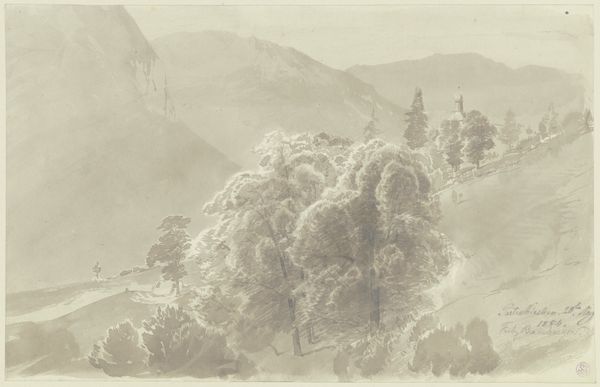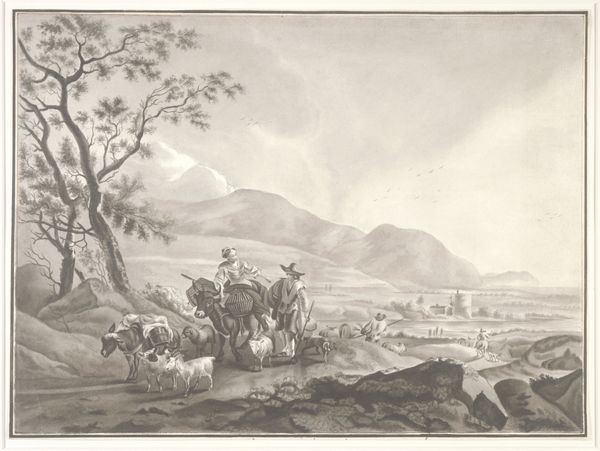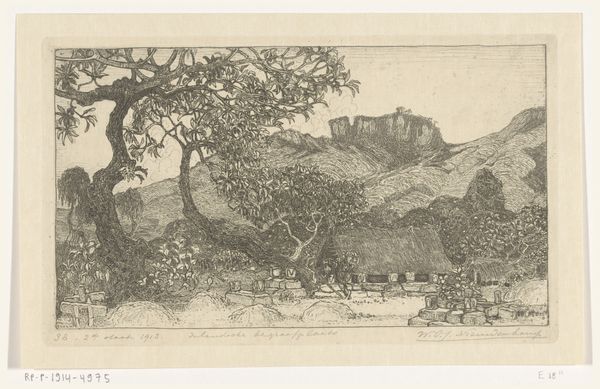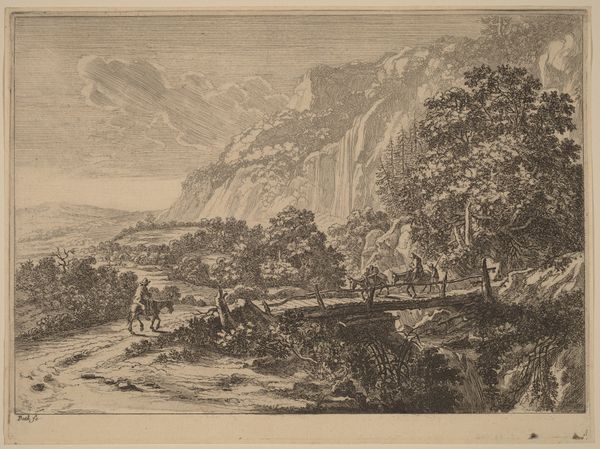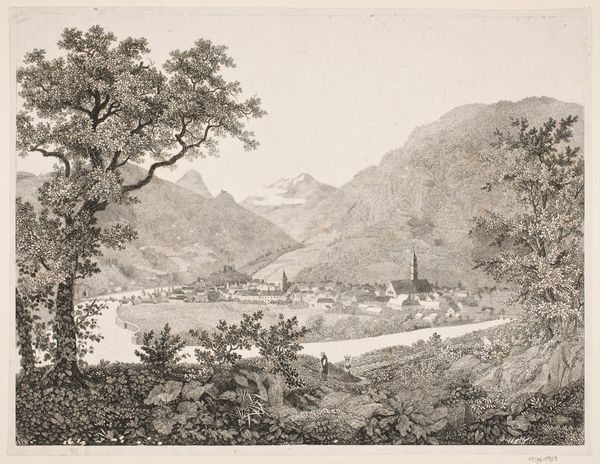
print, etching, engraving
#
neoclacissism
# print
#
etching
#
old engraving style
#
landscape
#
engraving
Dimensions: plate: 27.9 × 46.7 cm (11 × 18 3/8 in.) sheet: 35.7 × 54 cm (14 1/16 × 21 1/4 in.)
Copyright: National Gallery of Art: CC0 1.0
Editor: This is "Horace's Sabine Villa", an etching and engraving made in 1762. The landscape is so detailed; the mountains are grand and a sense of classical romanticism prevails. The details, although intricate, do leave me wondering about the significance of the imagery depicted. How do you interpret this landscape? Art Historian: Indeed. It's fascinating how seemingly simple landscapes become powerful cultural vessels. The image is infused with symbolism that reflects cultural values of the era, the rise of neoclassicism, with idealized images referencing specific places or stories resonating with contemporary audiences.. Notice the almost idealized rendering of nature—the mountains aren't just geological forms but evoke the sublime and romantic landscape—while also the presence of that memorial-like urn, reminding us of time. Editor: So the image's strength lies not only in its rendering of the natural world, but also in the memory the natural world envokes? Art Historian: Precisely! The artist Peter Stephens transports us not only to a geographical location but to a memory, evoking shared knowledge and an appreciation of history. Even the horse-drawn carriage indicates the travel as a pursuit of knowledge and a personal discovery of history.. The classical education, steeped in history and culture, deeply informed artistic sensibilities and aesthetic tastes. Does the artwork inspire contemplation on your own sense of place and identity within cultural landscapes? Editor: I had only considered my own connection with a sense of physical space; the prospect of engaging on a personal, historical, or cultural landscape now creates much more curiosity for study. Art Historian: Understanding art lies within those connections, between the object, the artist, and the culture. It's where meaning resides.
Comments
No comments
Be the first to comment and join the conversation on the ultimate creative platform.
